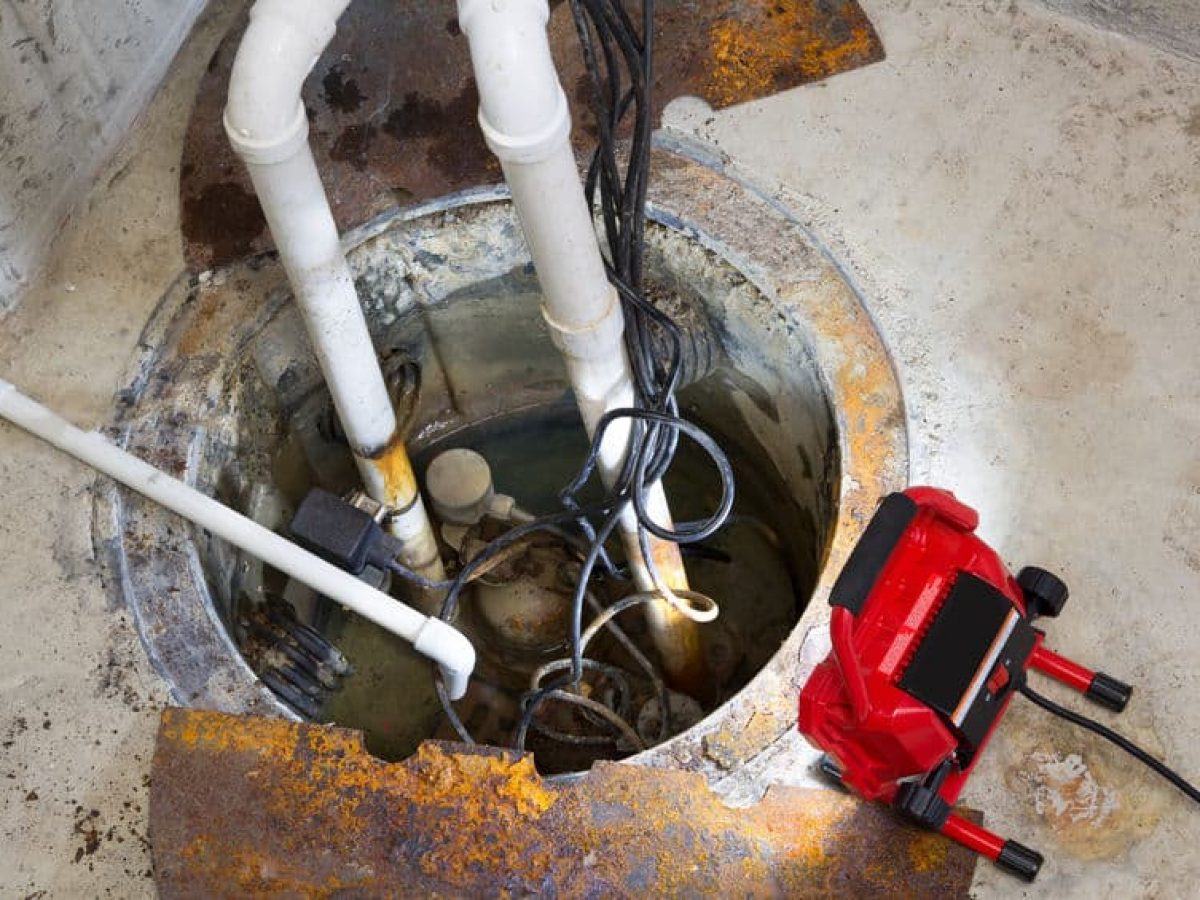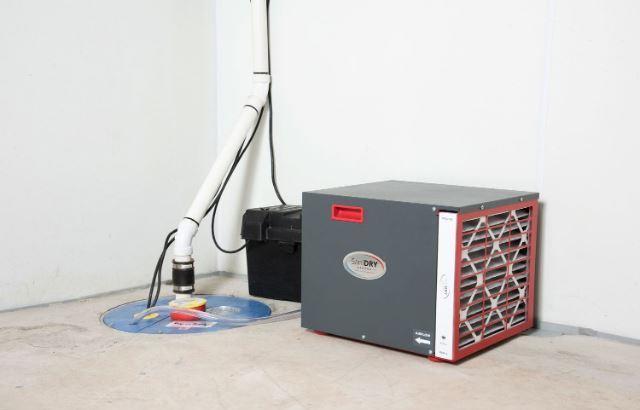Simple Tips for Servicing Your Sump Pump
Simple Tips for Servicing Your Sump Pump
Blog Article
Here underneath you can find a good deal of amazing information regarding How To Effectively Clean A Sump Pump.

Sump pumps are important elements in numerous homes, particularly in areas vulnerable to flooding or extreme moisture. They help protect against water damages by efficiently getting rid of excess water from basements or crawl spaces. Nevertheless, like any other device, sump pumps require regular maintenance to ensure they work properly when needed the most. Cleaning your sump pump is a crucial part of its maintenance, and recognizing exactly how to do it properly can save you from expensive repair work and possible disasters.
Introduction
Keeping a tidy sump pump is crucial for its proper performance and durability. Neglecting this crucial task can bring about obstructions, breakdowns, and ultimately, water damage to your residential property. Therefore, learning just how to clean up a sump pump is vital for house owners that depend on these gadgets to keep their cellars dry and protected.
Understanding the Sump Pump
Prior to diving right into the cleansing process, it's vital to have a standard understanding of exactly how a sump pump functions. Typically installed in a pit or container listed below the basement floor, a sump pump includes a number of vital elements, including a pump, a float button, and a discharge pipeline. When water builds up in the pit, the float switch activates the pump, which after that pumps the water out with the discharge pipe, away from the structure's foundation.
Indications of a Dirty Sump Pump
Knowing when your sump pump needs cleaning is important for avoiding potential breakdowns. Some usual indicators that suggest an unclean sump pump consist of strange noises throughout procedure, decreased water circulation, and noticeable particles in the pit. If you discover any of these signs, it's necessary to clean your sump pump immediately to prevent any type of more problems.
Getting ready for Cleaning
Before you begin cleaning your sump pump, it's important to take some security preventative measures. Start by shutting down the power to the pump to prevent any electric accidents. In addition, put on appropriate safety gear, such as handwear covers and safety glasses, to safeguard yourself from dust, particles, and potential microorganisms.
Detailed Guide to Cleaning a Sump Pump
Turning off the Power
Begin by separating the power supply to the sump pump to prevent any crashes while cleansing.
Removing Debris and Dirt
Make use of a container or an inside story to get rid of any noticeable particles, dust, or sediment from the sump pit. Dispose of the debris correctly to avoid it from blocking the pump or the discharge pipe.
Cleaning up the Pump and Drift Change
When the pit is free from particles, carefully remove the pump from the pit. Examine the pump and the float button for any type of indicators of damage or wear. Make use of a soft brush or cloth to cleanse the surfaces and eliminate any type of gathered crud.
Purging the System
After cleansing the pump and float switch, purge the sump pit with clean water to remove any kind of remaining dust or debris. This will certainly aid ensure that the pump runs smoothly and effectively.
Checking for Correct Performance
Prior to reinstalling the pump, execute a quick test to guarantee that the float button activates the pump correctly. Put some water right into the sump pit and observe the pump's operation. If whatever is operating correctly, you can reassemble the pump and reconnect the power supply.
Maintenance Tips to Maintain Your Sump Pump Clean
In addition to periodic cleansing, there are numerous upkeep tips you can follow to keep your sump pump in ideal condition:
Final thought
Cleaning your sump pump is a crucial element of its maintenance and ensures that it runs effectively when you require it the most. By complying with the actions laid out in this overview and integrating normal maintenance into your regimen, you can prolong the life expectancy of your sump pump and secure your home from water damages.
6 STEPS ON HOW TO CLEAN A SUMP PUMP PROPERLY
UNDERSTANDING SUMP PUMPS
Your sump pump plays a crucial role in protecting your home by managing and removing excess water. It primarily functions as a “shield”, guarding your basement against the damaging effects of water accumulation. The pump is housed in a sump pit in the lowest part of your basement, and its job is to pump out any water that collects there.
During heavy rainfalls or when snow melts rapidly, water can infiltrate your basement, posing potential risks like flooding, structural damage, and harmful mold growth. Here, the sump pump springs into action, pumping out the intruding water and directing it away from your home.
SAFETY FIRST
Before cleaning, remember to prioritize safety. Disconnect the sump pump from the power source to prevent any accidental electric shocks. Also, wear sturdy gloves to protect your hands from any sharp or dirty components within the pump.
REMOVE THE SUMP PUMP
After ensuring your safety, the next step is to remove the sump pump from its pit. Doing this might require careful maneuvering as you don’t want to damage any pump components. Once removed, clean the sump pit to remove any accumulated debris or sludge.
INSPECT THE PUMP
Inspect the pump for any visible signs of wear or damage. Check the power cord, float switch, and impeller housing. If any components look worn out or damaged, consider replacing them to ensure optimal performance.
CLEAN THE PUMP
Thoroughly clean the pump with warm, soapy water. Make sure to rid it of any dirt, gravel, or other debris that might impede its performance. You can use a toothbrush to clean the small, hard-to-reach parts of the pump.
REINSTALL THE SUMP PUMP
Reinstall the pump into the sump pit Make sure it’s positioned correctly to remove the water effectively Once it’s back in place, reconnect it to the power source TEST THE PUMP
Finally, pour some water into the pit to ensure the pump works correctly. It should start automatically and begin pumping out the water; if it doesn’t, check the power source and the positioning of the pump.
Remember, while cleaning your sump pump is an essential part of home maintenance, hiring a professional plumber for a thorough inspection and cleaning at least once a year is also important. This will ensure that your pump is in optimal condition, ready to protect your home from potential water damage.
BEST PRACTICES FOR CLEANING SUMP PUMP DISCHARGE PIPES
Regular Inspection: Regularly inspect your discharge pipes, especially during heavy rainfall or snowmelt periods. Look for any signs of blockage or damage. Early detection of problems can prevent serious issues down the line. Periodic Cleaning: Over time, sediment and debris can accumulate in the discharge pipes, impeding the flow of water. Regular cleaning helps keep the pipes clear and functioning efficiently. You can use a high-pressure water jet to effectively clean the pipes. Insulation During Winter: In colder climates, discharge pipes can freeze, blocking the outflow of water. Protect your discharge pipes from freezing temperatures by insulating them with foam pipe insulation. This will ensure the sump pump can continue to discharge water even in freezing conditions. Proper Positioning: The discharge pipe should be positioned to direct water away from your home’s foundation. Improper positioning can lead to water seeping back into the basement. Ensure the pipe is long enough and angled correctly. Installation of a Check Valve: A check valve prevents water from flowing back into your sump pit after the pump has pushed it out. Installing a check valve helps maintain the efficiency of your sump pump and reduces the risk of flooding. Minimize Pipe Turns: Every curve or turn in the discharge pipe can decrease the efficiency of water flow. By minimizing turns and bends in your discharge pipe, you can increase the efficiency of your sump pump. https://www.fullspeedplumbing.com/how-to-clean-a-sump-pump-properly9999/

As a fervent reader on How To Effectively Clean A Sump Pump, I think sharing that excerpt was sensible. Sharing is caring. Helping people is fun. Thank you so much for your time invested reading it.
Instant Quote Report this page